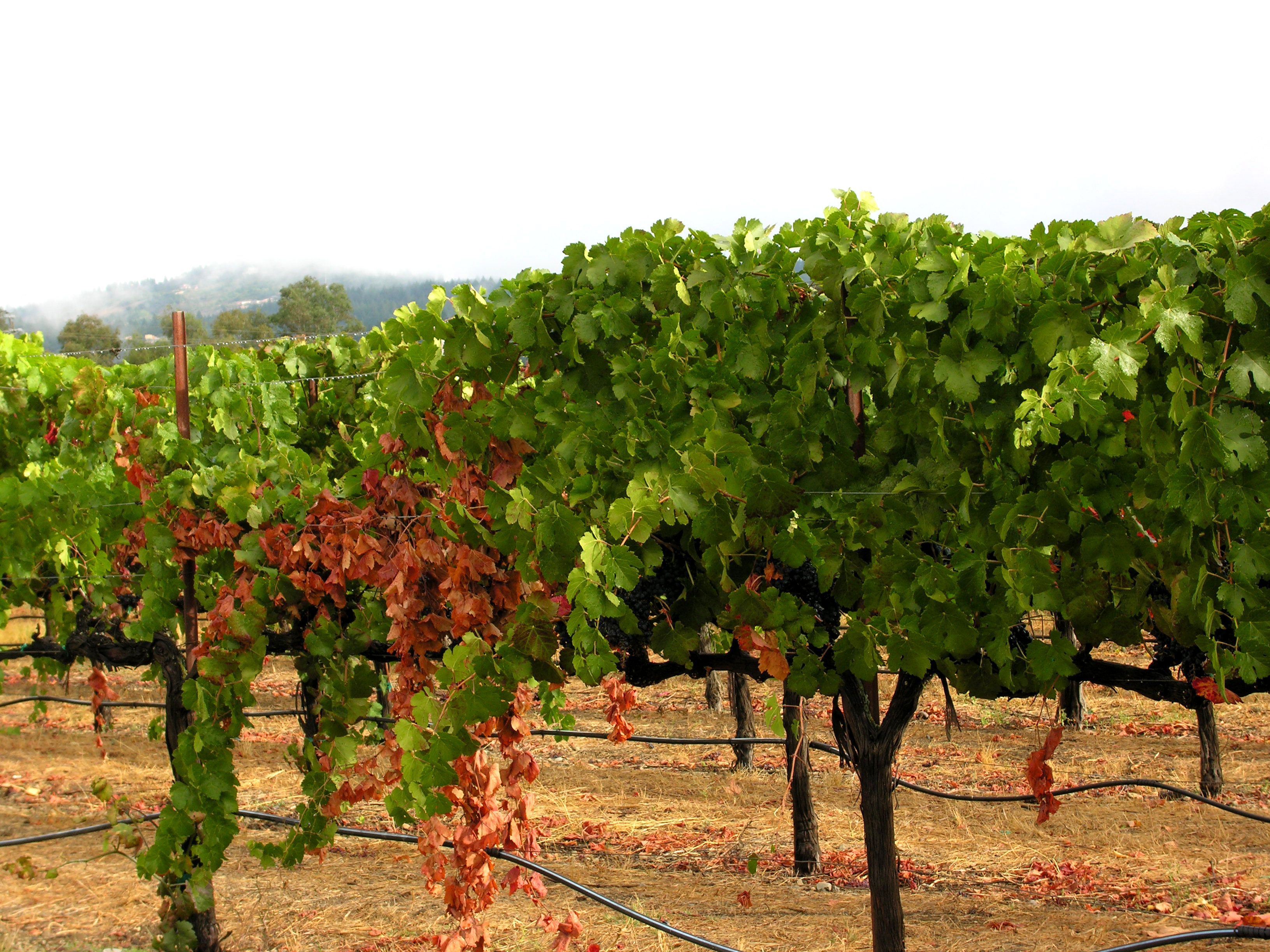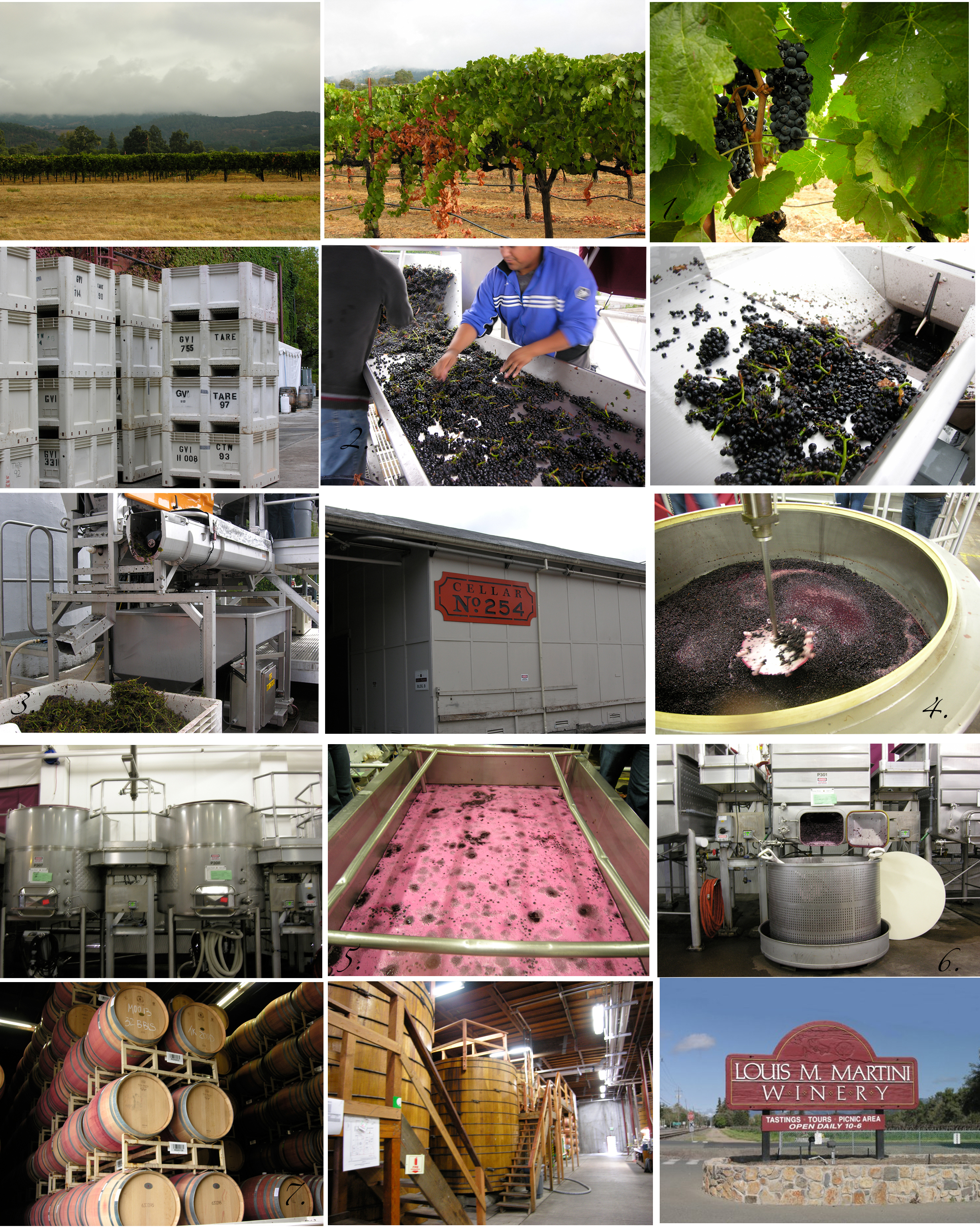I was lucky enough to have been invited to the Louis M. Martini Winery in St. Helena, Napa Valley, earlier this month. This is a wonderful place to visit anytime of the year, but especially so in October when the the vineyards and wineries are a hive of activity. During a period of about 4 – 6 weeks in the fall, the grapes are harvested and crushed to provide for the year’s wine production. Drop by, and you’ll be given a tour of the wine-making facilities complete with sky-high towers of barrels. One of the winery’s experts will talk you through the whole wine-making process from vine to bottle and you’ll see the grapes being sorted and the juice extracted. You’ll even be allowed to try the juice and the “wine” at different points of fermentation. And finally, you’ll round off your day with a visit to the winery’s tasting room.
If you plan to visit the winery, be sure to give them a call first to ensure they reserve you a place on one of their daily tours. Click on for a “photo tour” of the Louis Martini’s winery, and the “crushing” of the grapes.
1. The grapes here are Petite Sirah. Picked and eaten off the vine, these grapes are incredible sweet and moreish, much like candy (Skittles spring to mind!) The “Petite” in the name refers to the diminutive size of the grapes. The high skin to juice ratio means the grape produces wines with high tannins and acidity – components that give them the ability to age well over time. Louis M. Martini bottles the grape as a single varietal wine for its tasting room only. Later that day, I was able to try some Cabernet grapes off the vine. In contrast these berries were a little less sweet (though still very pleasant and easy to eat) with thicker, more tannic skins.
2. Once the grapes are picked and brought into the winery in large crates, they are “sorted”. This involves moving them through a vibrating conveyor belt and picking off and discarding leaves, damaged or shriveled grapes and anything else you don’t want to find in your wine!
3. The clusters of grapes, still on their stems, are passed through a stemmer. The loose berries go through a crusher and emerge from the bottom of the machine into a large bin. The stems pass out through another chute.
4. Now for the important part: the extraction of the grape juice or “must”. When making red wine, it’s not enough to just collect the juice – part of the extraction process is to press the skins and seeds to get as much of the color, flavor and tannins out as possible as they vastly contribute to the aesthetics, bouquet, texture or “mouthfeel”and flavor of the final product, especially since red wine gets its color from the skin of the grape.
There are several methods of extraction. This one here is called “punch down,” and is the most aggressive form of extraction. As the juice is extracted the skins and seeds float to the top of the tank due to the release of carbon dioxide to form what is called the “cap.” To ensure the juice gets as much contact as possible with the skins and seeds, a large mechanical arm is used to “punch” the “cap” down into the must. Wines such as this Cabernet here, which have been punched down are bolder, more robust and have more structured mouthfeel and body.
5. The second method of extraction is called “pumping over,” or “remontage” in French. It’s a more delicate process than the “punch down.” Here, fermenting must is emptied out from the bottom of the extraction tank and then pumped into the top of the tank over the top of the “cap.” This tank here contains Pinot Noir. Some of the grapes have deliberately been left whole to encourage “carbonic maceration,” which is when the must ferments within the berry and makes for a delicate, light wine with floral aromas.
The third method of extraction is called “submerged cap,” where the “cap” is pushed down in the tank and locked into place by a submerging device. There are two fermentation compartments on either side of the submerged cap, and fermenting wine in the upper compartment is drained by gravity into the lower compartment passing through the cap and taking on flavor, color and tannins as it moves. The wine is then pumped from the lower compartment to the top fermentation tank and the process starts again. This gentle technique makes lighter, more floral wines.
6. The period of fermentation ranges between 7-14 days, but the fermenting “must” remains on the skins for up to one month depending on the wine, before it is strained.
7. Towers of the winery’s Napa Valley Cabernet Sauvignon. Don’t underestimate the importance of the barrel in forming a wine’s personality. The wood that is used provides very distinctive characteristics. American oak, for example, has a very large grain which makes for simpler, more bolder flavors, strong on the vanilla and wood. French oak, on the other hand, lends a great deal of intricacy to a wine largely due to the fact that it has a finer grain. The resulting wine is highly nuanced, with strong hints of chocolate. In this photo, a mix of French, Hungarian and American oak barrels with medium to heavy “toast” levels are used to infuse the wine with a slight smokiness, and extra flavor, depth and complexity.


